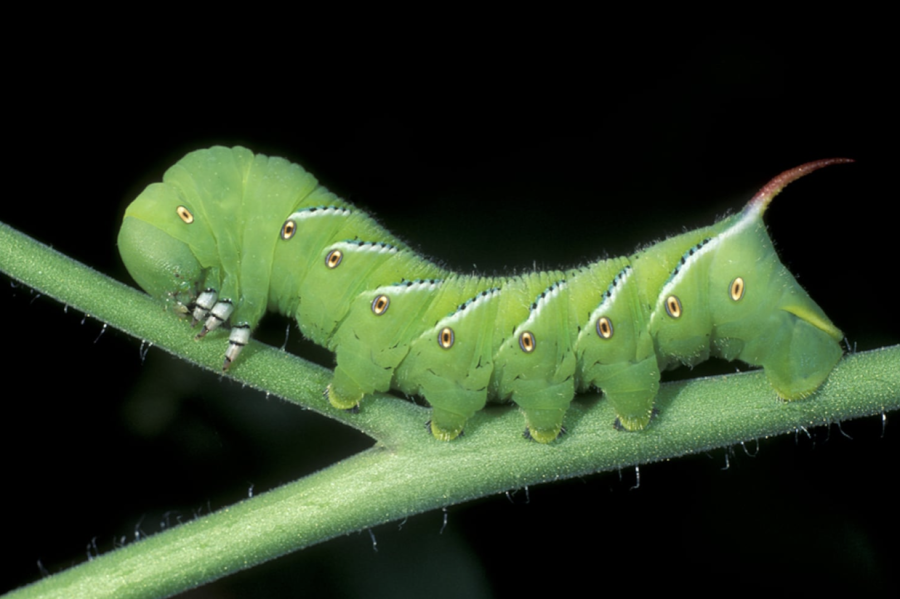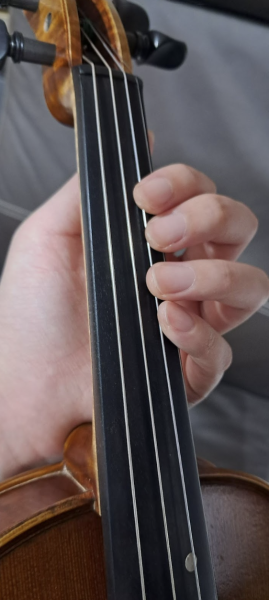Common Pests Plaguing OHS Gardeners
A tomato hornworm can devour up to four times their body mass in leaves and fruits per day.
Pests are a nuisance to gardeners, whether the gardeners have a field of crops or just a small home garden. However, while they defoliate and harm plants, pests like moles often also serve as a link in the food chain and a crucial part of the ecosystem around them. Some OHSers have had experiences with garden pests, and described their experiences with them.
Ryan Avalos, a 7th grader, said that they have a potato bug infestation in their tomato plants. Potato bugs, also known as Jerusalem crickets, are some of the largest insects found in North America, however, they are neither crickets nor native to Jerusalem. They most likely got their name from “Jerusalem,” an exclamation used after one is startled. As their other, more accurate name suggests, they mostly feed on potatoes. They devour the stems and leaves, in some cases completely defoliating the plant. Although these bugs are not venomous, they have a very foul smell and their bite can be extremely painful.
While they defoliate and harm plants, pests like moles often also serve as a link in the food chain and a crucial part of the ecosystem around them.
— Harmehel Singh
Another OHSer who preferred to remain anonymous has also experienced infestations on their potato plants, as well as their cucumber and tomato plants, with the pests ranging from caterpillars to moles and raccoons. Moles can sometimes positively contribute to garden ecosystems — they can aerate the soil, eat undesirable insects, and also serve as prey for other wildlife — however they eat earthworms, which are critical for soil aeration. Moles’ tunnels can also severely damage the roots of plants, making them pests.
Amira Khan, a senior, has had gnats on their tomato plants. In order to deal with the pests, they have tried “setting traps, using repellants (safe ones), and covering the soil with sand [or] something dry so the gnats can’t lay eggs in the soil.” Fungus gnats are often found on tomato plants, and reproduce very quickly. The adult gnats do not cause much harm and are mostly an annoyance, while the gnat larvae can cause serious damage to the roots and stunt plant growth. Another OHSer who has encountered tomato hornworms on their plants is Amanda Lindstrom, who has tried to kill them by putting the bugs in a bag inside of a freezer. All types of hornworms have a distinctive horn on the front of their heads that can be used to easily identify them. Hornworms usually lay their eggs on leaves, which the larvae later feed on once hatched. Their presence can easily be identified by the large black or green droppings they leave behind. A hornworm’s diet consists of tomato, eggplant, pepper, and tobacco plants.
While gardening is second to no other joy, garden pests can bring that enthusiasm to shreds. However, with various pest control management methods and treatments, this can be remedied and gardens can be enjoyed.











